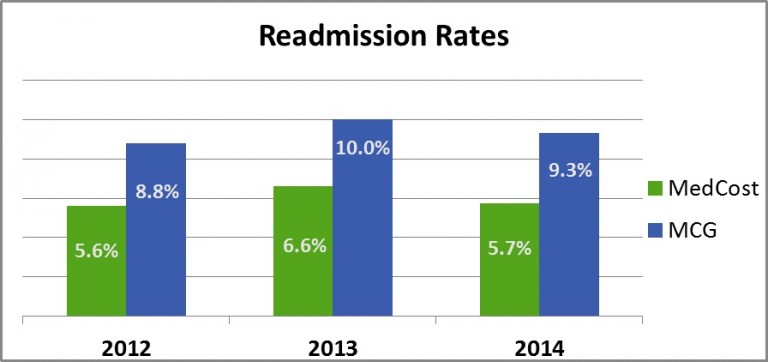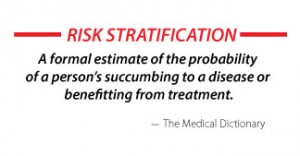Result: Lower Medical Costs
Employers and consultants are hearing a lot of buzz about how “big data” saves money on company health care plans. The revolution in analyzing mounds of big data is now providing unprecedented opportunities for employers to drive cost efficiency while improving employee health.
A January 2014 study by the nonprofit Milken Institute projected that avoidable expenses for chronic conditions such as diabetes, heart disease and certain cancers could reach $8 billion in North Carolina and $5 billion in Virginia by 2023.[1] A 2015 Centers for Disease Control report lists this alarming fact—most of the risk factors for chronic diseases are preventable.[2]
Risk stratification of employee populations can prevent unnecessary spending for costly services. Predictive modeling based on big data can help calculate emerging risks that otherwise could go undetected until the full onset of illness.

MedCost partners with Deerwalk Inc. to provide more extensive analytics for our Care Management programs. In-depth reporting identifies gaps in preventive care for particular employee populations that could save thousands of dollars each year in excessive costs. This innovative technology gives employers robust analysis of cost trends. Health screenings and individual nurse coaching are impacting negative patterns of risk and spending, while optimizing care.
Employee hospitalizations affect insurance rates as well as health outcomes. The chart below demonstrates how MedCost has consistently outperformed the benchmark Milliman Care Guidelines (MCG) through reducing hospital readmission rates.

Comparison between MedCost and Milliman Care Guidelines
Lower hospital readmissions mean healthier employees and significant savings to employers. Deerwalk’s national average of inpatient hospital costs is $24,000 per admission.[3] MedCost employers saved over $21 million in 2014 just on inpatient hospital costs alone.
Total population health (managing your employees’ health overall) is the key to controlling medical spend. Benefit plans that strategically evaluate trends with predictive modeling can optimize employee care while conserving valuable health care dollars.
Contact Jason Clarke at (336) 774-4283 or your benefits consultant for more resources.
[1] Anusuya Chatterjee, “Checkup Time: Chronic Disease and Wellness in America,” Milken Institute, January 2014, http://www.chronicdiseaseimpact.com/
[2] “Four Domains of Chronic Disease Prevention,” Centers for Disease Control Fact Sheet 2015, http://www.cdc.gov/chronicdisease/pdf/four-domains-factsheet-2015.pdf
[3] Based on Deerwalk Inc. Utilization Metrics Report FA144, accessed October 16, 2015





Add new comment